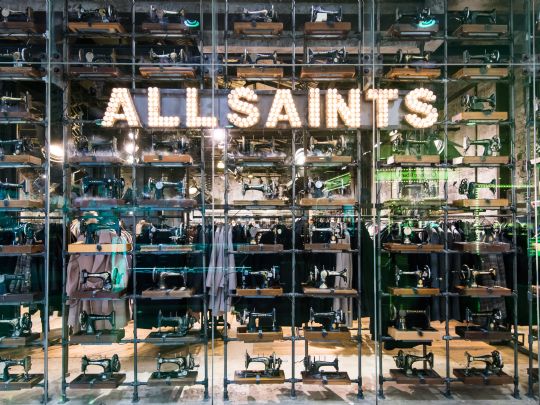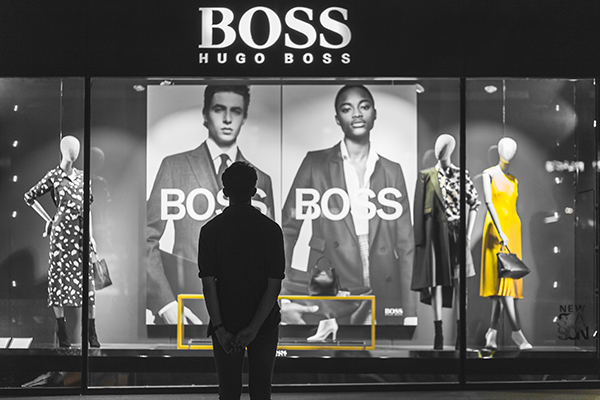The well-documented ‘death of the High Street’ is supposedly dawning upon us, with the growing dominance of e-commerce and the declining footfall figures across the country’s town and city centres regularly discussed across the industry.
The growing gap between bricks and mortar stores and the online commerce world could be a worrying sight for many staple High Street retailers who are failing to take advantage of the current climate, while others are thriving in the new omnichannel world.
The latest online retail figures from IMRG-Capgemini found that UK online retailers recorded their strongest growth yet in 2017, with sales up more than 16 per cent year-on-year in August. In contrast, the latest figures from the British Retail Consortium (BRC) revealed an ongoing trend of footfall decline on the High Street, with August recording a 2.6 per cent decline. Helen Dickinson, chief executive of the BRC, notes: “Encouraging shoppers back to more of our town centres is crucial to reducing the high number of vacant premises and the increasing gap between the vibrant and in-demand areas and those at the much more economically fragile end of the spectrum.”
The role of the High Street is now broader than just consumption, according to Kevin Flynn, head of retail at creative technology consultancy Thoughtworks. People can now satisfy the majority of their shopping needs sat on their mobile or tablet from the comfort of their home, so High Street retailers must provide consumers with an experience. Flynn predicts that the stores of the future “will shift to focus on providing great experiences which entertain, inform and allow social interaction. The shift has already begun – in newer shopping centres, there is proportionately more leisure space than retail. The challenge for retailers now is to rethink the role of the store in this new context.”
Technology is at the heart of this change, with the benefits of upgrading in-store technologies becoming ever more apparent. Given retail’s steady migration to mobile and e-commerce, observers have differing ideas on what retail and the High Street will look like in the future. Retailers are beginning to invest heavily in digital channels, while others are looking to completely reimagine the in-store experience for customers.
A recent study from retail consultancy KPS found that over half of shoppers have given up on a purchase in-store because the queue was too long, demonstrating that the failure to invest properly in in-store solutions to address this type of issue has a clear impact on sales performance. Multi-channel consumers are now used to a certain level of service, with leading retailers introducing new solutions such as mobile points of sale, real-time stock availability and one-hour delivery options.
John Lewis, for example, this year launched a £4 million digital initiative which will see 8,000 shopfloor staff equipped with an iPhone, enabling them to quickly help customers with their questions and queries. Staff can scan product barcodes to access information on stock and user reviews; they can build a basket with a customer and complete the transaction through mobile, transfer to a till-point, or email the basket to the customer so they can complete their order at home; or check stock availability information for products in-store, online and in other local branches.
According to a JDA Software/PwC report earlier this year, digital transformation is the key to profitability in the future. Some 69 per cent of the 350 global retail executives surveyed for the research said that digital transformation is their highest investment priority in the coming year, in particular mobile-enabled applications (85 per cent), Big Data (86 per cent) and use of social media data (85 per cent).
The retail industry has proven that it is open to rapid innovation. In just five years, the in-store payments space has witnessed considerable change. In 2012, cash was still the dominant payment method, contactless cards were effectively non-existent, and card payments were often accompanied by a usage fee. Fast-forward to the present day and contactless payment terminals are now ubiquitous around the world, while the traditional point of sale system is no longer a necessity for some retailers. Mobile point of sale systems based on tablets or smartphone apps are growing in popularity among retailers of varying sizes, while biometric payments, mobile wallets and in-app payment solutions are also witnessing strong growth. Simplicity is key for the consumer; a solution that makes the purchase journey smoother will undoubtedly grow in popularity.
British Home Stores, Woolworths and more recently Toys ‘R’ Us are examples of high profile retailers who failed to recognise the importance of innovation and digital investment, falling into administration after sharp declines in in-store sales. Thoughtworks’ Flynn argues that transformation must extend far beyond IT, digital and innovation teams, stating that “technology impacts key areas of the business, from budgeting and strategy to people, and so belongs at the top of a board’s agenda. It should help businesses focus on flow efficiency, not just cost efficiency to drive responsiveness. Success should be measured in outcomes such as the value delivered to customers.”
With shoppers now so accustomed to a first class in-store service, anything that falls below that standard is likely to result in consumers taking their business elsewhere, particularly to retailers who are providing a new in-store experience altogether.
Nigel Arthur, managing director EMEA at mobile engagement firm Urban Airship, notes the changing nature of consumer in-store shopping: “There has been a significant shift in the retail industry, consumers are getting smarter about the way they shop in-store. For instance, they will do their research online to find the best deals and based on the results they will go in-store to purchase the product.
“Some retailers are taking note of this behaviour and integrating new technologies such as beacons, mobile wallet passes, mobile apps and app notifications in order to provide an improved shopping experience.”
A survey from Vista Retail Support suggests that consumers are ready for this change, with more than three quarters of respondents now familiar with AI-based technology and believing that it can transform their shopping experience. A further 67 per cent feel that it should be a priority for retailers to implement futuristic technologies such as AI and augmented reality to enhance their in-store shopping experiences and to increase convenience.
It is clear that there is an appetite among consumers for a more digital experience when shopping in-store. The role of bricks and mortar stores is changing – flagship stores for retailers are now as much of a brand-building platform as a sales medium. The benefits of such a store are clear enough for online-only players such as Made.com, Amazon and notonthehighstreet.com to make their debuts on the bricks and mortar stage, using unique digital experiences to entice customers into their stores, rather than using the space to focus solely on boosting sales figures.
The rise of the smartphone has contributed greatly to the new age of commerce, where shoppers on the High Street can instantly check to see if the product they are looking at is cheaper elsewhere. Commentators believe that the mobile phone will become a key feature of the retail world in the future, where customers will be able to scan items to access further information online, such as stock and delivery options, and proceed to placing an order through their mobile. This seamless transition between in-store and online information will become the norm across stores on the High Street, with those failing to offer such omnichannel capabilities falling behind the rest of the field.
Retailers are developing ways to connect themselves with a customer’s smartphone, the most developed of which is beacon technology – which is expected to play an important role in the future of in-store retailing, but currently remains in its infancy. Stores will be able to identify customers and send personalised messages and offers through wireless devices which are able to recognise when a certain customer enters the store through either Bluetooth or Wi-Fi technology. The use of beacons can help retailers to create a more engaging in-store experience, where stores have the ability to produce hyper-personalised content for consumer, deepening the personal relationship between the shopper and the retailer.
London Gatwick airport recently implemented more than 2,000 such beacons across its two terminals, while Urban Outfitters has also installed beacons to detect proximity and send relevant offers or promotional messages to customers in-store. In addition, Mastercard placed a specific focus on the use of beacon technology in its 2017 incubator programme, suggesting that the technology will be a prominent feature for retailers in the coming years.
Augmented and virtual reality are also making waves in the retail world, and with the launch of the new ARKit app from Apple, the technology is expected to grow substantially over the coming months. A new study from DigitalBridge finds that augmented and virtual reality is the most sought after technology for retail customers, with 70 per cent of consumers expecting retailers to launch an AR app within six months of Apple’s ARKit roll-out. An example of this is the new IKEA Place app, which will use augmented reality to enable customers to picture how pieces of furniture can fit in their homes when it launches. Michael Valdsgaard, leader of digital transformation at IKEA Systems, expects augmented and virtual reality to be huge for the retail industry, noting that their implementation “will be a total game-changer for retail in the same way as the internet. Only this time it will be much faster, and accessible to billions of customers using iPhone and iPad.”
So what will the future of in-store retail look like? Amazon recently unveiled plans for its new physical grocery store, Amazon Go, which features the latest advances in shopping technology that enable customers to simply pick up the products they want and walk out, with no queues and no checkout. In-store sensors detect which items have been taken, and when the customer leaves the store their online Amazon account will be charged and they will be emailed a receipt. Using state-of-the-art technologies such as computer vision, sensor fusion and deep learning, Amazon has reshaped the entire grocery shopping experience – which has already been picked up by Sainsbury’s in the UK, which is currently trialling similar technology that enables customers to pay for their goods with their smartphone, skipping checkout queues.
This offers a glimpse into what retail stores may look like in the years to come, with convenience driving innovation in the sector. A close link with technology is undoubtedly the future of retail, where the customer journey becomes a seamless and enjoyable one. As the younger generations, who are more inclined to use such technology, grow older and gain more buying power, retail stores will increasingly adopt solutions to suit those customers’ needs – and possibly ensure their own survival.
Latest News
-
Carrefour opens AI-powered microstore in Belgium
-
Chief information officer at Subway departs
-
What’s next for retail in 2026?
-
The most read Retail Systems stories of 2025
-
Three-quarters of UK shoppers 'put security first' for online payments, finds AmEx research
-
Deichmann rolls out new order fulfilment platform
Beyond Channels: Redefining retail with Unified Commerce
This Retail Systems fireside chat with Nikki Baird, Vice President, Strategy & Product at Aptos will explore how unified commerce strategies enable retailers to tear down these barriers and unlock new levels of operational agility and customer satisfaction.
The future of self-checkout: Building a system that works for consumers and retailers
In this webinar, industry leaders discussed what the future of self-checkout looks like and how retailers can make the technology work for everyone.
© 2024 Perspective Publishing Privacy & Cookies










Recent Stories